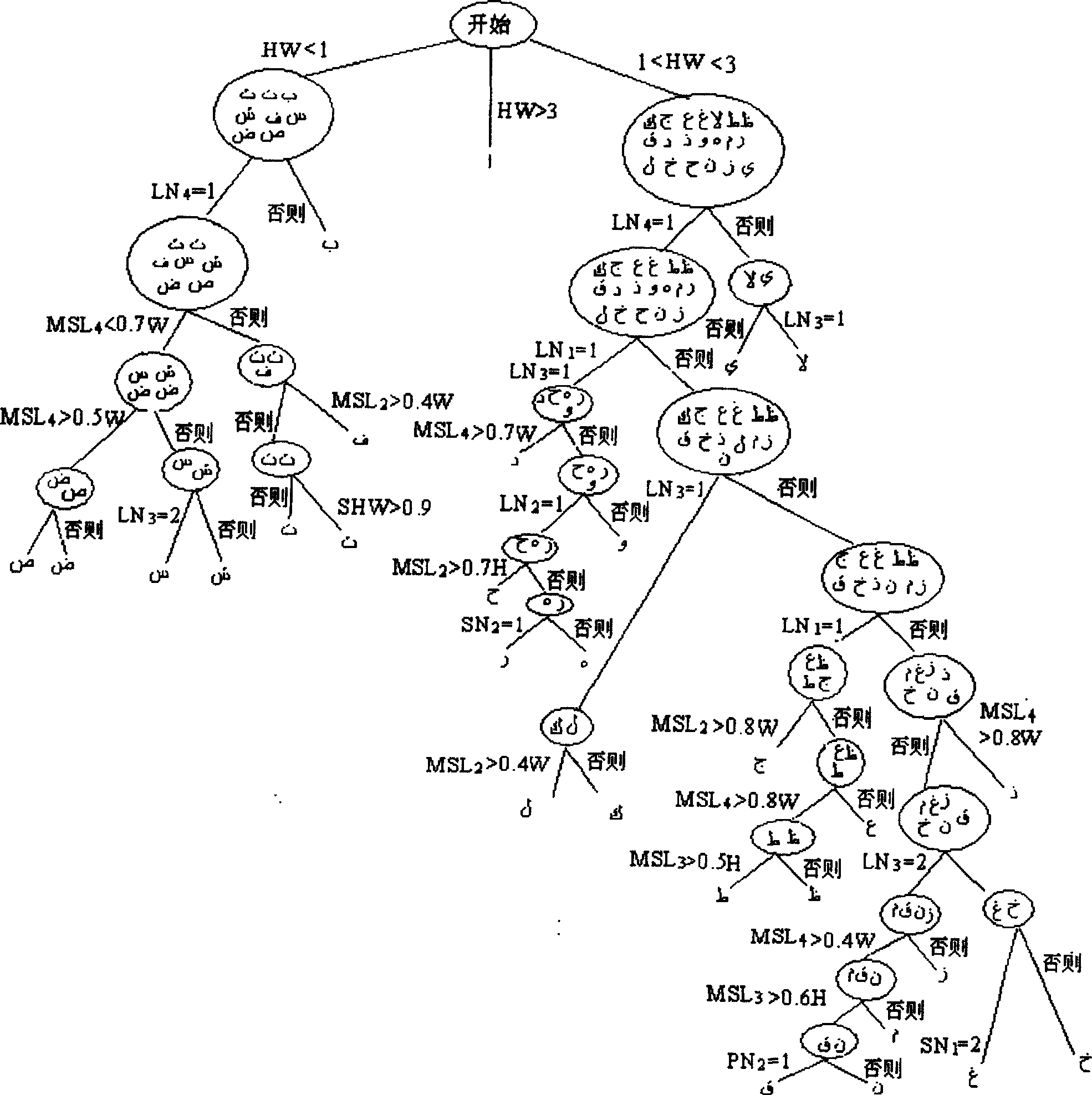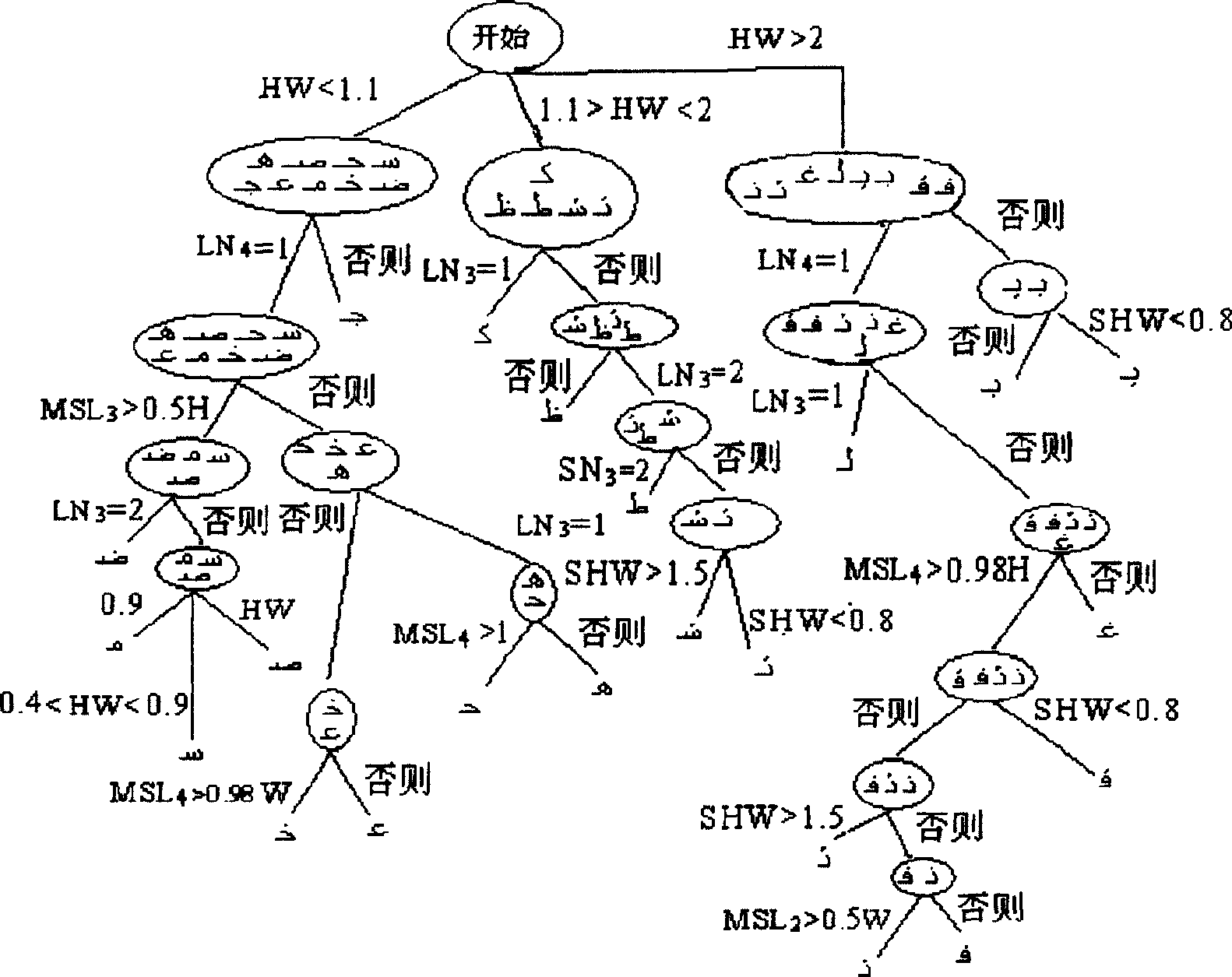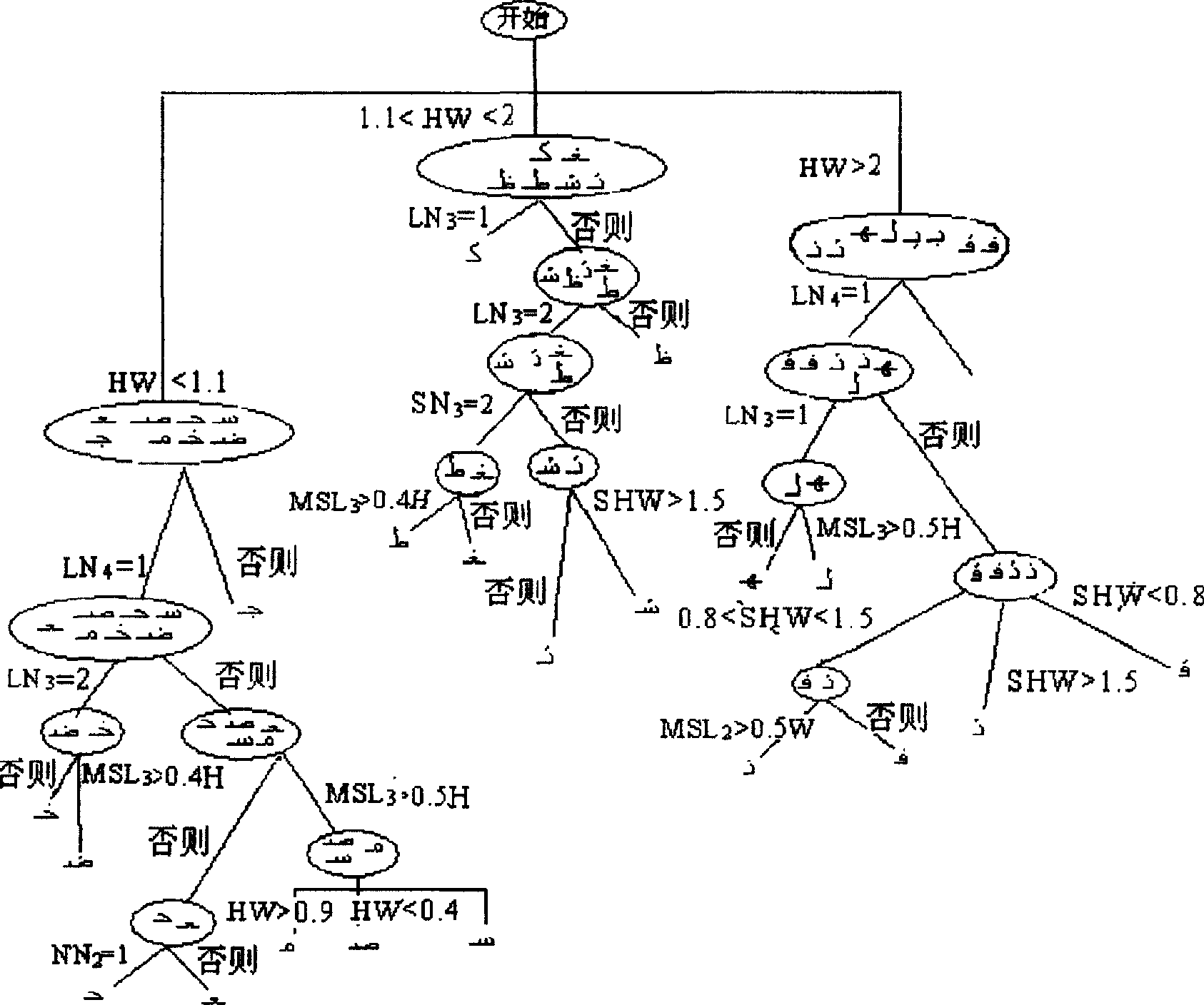Method for recognizing print hand Arabic alphabets based on boundary characteristic
A boundary feature and recognition method technology, applied in the field of optical character recognition, can solve the problems of slow recognition speed, slow algorithm speed, unequal width of four forms, etc., and achieve the feature extraction process is simple and clear, easy to implement, and fast algorithm speed Effect
- Summary
- Abstract
- Description
- Claims
- Application Information
AI Technical Summary
Problems solved by technology
Method used
Image
Examples
Embodiment Construction
[0017] The present invention will be further described below in conjunction with accompanying drawing and specific embodiment:
[0018] combine Figure 1-Figure 4 , where HW is the letter aspect ratio, W is the letter width, H is the letter height, LN 1 is the number of wave elements in the left boundary, LN 2 is the number of wave elements in the upper boundary, LN 3 is the number of wave elements in the right boundary, LN 4 is the number of wave elements in the lower boundary, SN 1 is the number of zero straight lines in the left boundary, SN 2 is the number of zero straight lines in the upper boundary, SN 3 is the number of zero straight lines in the right boundary, SN 4 is the number of zero straight lines in the lower boundary, SL 31 is the length of the first zero straight line in the right boundary, SL 41 is the length of the first zero line in the lower boundary, MSL 2 is the length of the longest zero line in the upper boundary, MSL 3 is the length of the lo...
PUM
 Login to View More
Login to View More Abstract
Description
Claims
Application Information
 Login to View More
Login to View More - R&D
- Intellectual Property
- Life Sciences
- Materials
- Tech Scout
- Unparalleled Data Quality
- Higher Quality Content
- 60% Fewer Hallucinations
Browse by: Latest US Patents, China's latest patents, Technical Efficacy Thesaurus, Application Domain, Technology Topic, Popular Technical Reports.
© 2025 PatSnap. All rights reserved.Legal|Privacy policy|Modern Slavery Act Transparency Statement|Sitemap|About US| Contact US: help@patsnap.com



